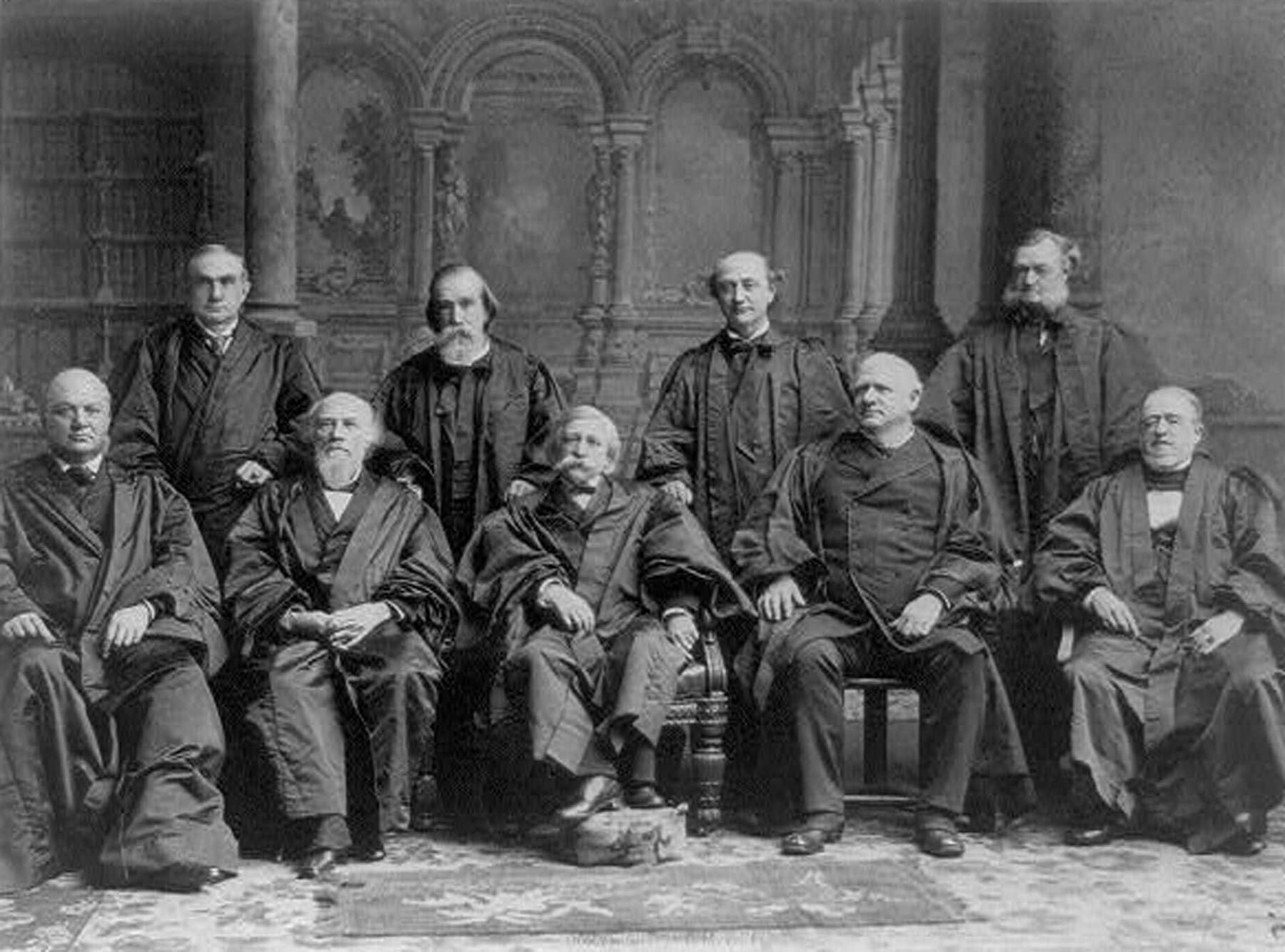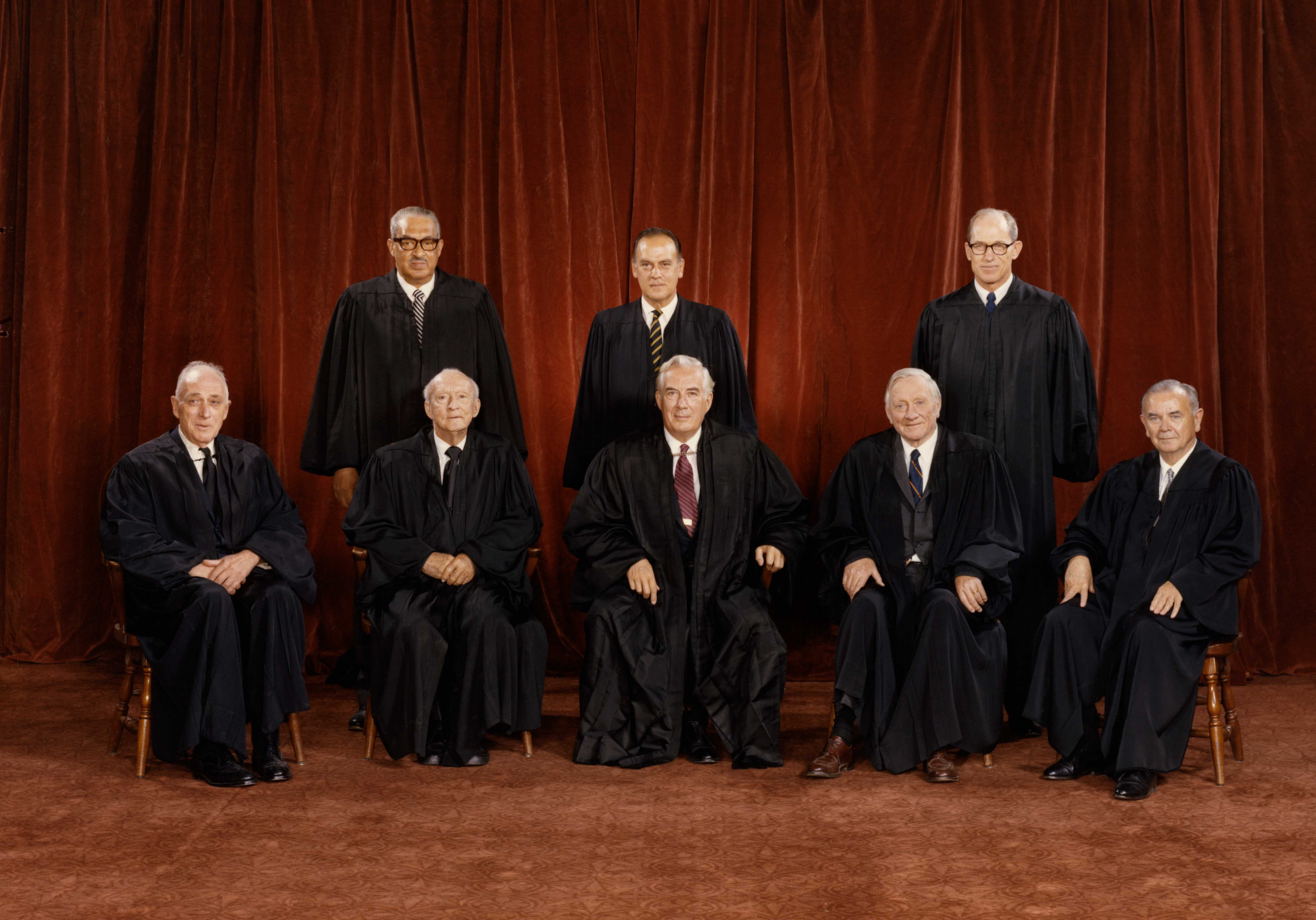Chapter 1
Challenging Segregation in the Courts
Some African Americans sought justice in local and state courts. But when lower courts provided no relief, issues like education equality and segregated transportation were taken to the highest court in the land, the United States Supreme Court.
African Americans and their allies used the court system as a powerful tool in the fight for equal rights. Changing laws had far-reaching effects that expanded opportunities and helped establish a more just society.
1950 Statistical Highlights
68% of African Americans lived in the South and 73% lived in urban areas.
The Supreme Court’s Role
United States Supreme Court, 2022
The Supreme Court plays a crucial role in interpreting and applying laws regarding race. Supreme Court justices rely on the Constitution as a foundational document, albeit one that did not initially include African Americans as full humans and citizens.
While the Supreme Court holds the power and responsibility to overturn legislation that is unconstitutional, it has sometimes failed to provide equal protection of the laws to all Americans, as outlined in the 14th Amendment. The composition of the Supreme Court affects its decisions. In 200 years, only three African Americans—Thurgood Marshall, Clarence Thomas, and Ketanji Brown Jackson—have served on the Court.
The rights guaranteed by our Constitution are not self-enforcing; they can be made meaningful only by legislative or judicial action.
Thurgood Marshall, 1969
Interactive Timeline
The Supreme Court Interprets Race
1831-2023
African Americans and others have gone to the “court of last resort” to test arguments, claim rights, and seek protections. As a result, the Supreme Court has rendered several landmark decisions on matters of race, as well as issues of ancestry, ethnicity, and tribal sovereignty.
As Chief Justice John Roberts has noted, some cases were “a test that the Supreme Court would fail.” Other cases have resulted in the Court driving social change.

Thurgood Marshall
Civil Rights Lawyer to Supreme Court Justice
Justice Thurgood Marshall
Thurgood Marshall viewed legislative and judicial action as a means to eliminate racial inequality. As an attorney for the NAACP, he argued more than 30 cases before the Supreme Court, including the landmark Brown v. Board of Education of Topeka case. A highly successful litigator, he went on to serve as a federal judge in New York.
In 1965, President Lyndon B. Johnson nominated Marshall to be the U.S. Solicitor General before later nominating him to the Supreme Court in 1967. He was the first African American justice to sit on the bench.
The Negro who was once enslaved by law became emancipated by it, and is achieving equality through it. To be sure law is often a response to social change; but . . . it also can change social patterns.
Thurgood Marshall, 1967
Clarence Thomas
Seminary Student to Supreme Court Justice
Justice Clarence Thomas
Clarence Thomas was in seminary school when Thurgood Marshall joined the Supreme Court in 1967. But after Martin Luther King Jr.’s assassination, a disillusioned Thomas stopped his training for the priesthood. He eventually decided to study law, seeing that profession as an extension of his calling to help others.
While chairing the Equal Employment Opportunity Commission in the 1980s, Thomas was appointed as federal judge on the U.S. Court of Appeals for the District of Columbia Circuit. Following Marshall’s retirement, President George H. W. Bush appointed Clarence Thomas to fill Marshall’s seat on the Supreme Court in 1991.
Where Marshall advocated judicial action, Thomas encouraged judicial restraint. Thomas has cited varied influences on his worldview, from his grandfather’s teachings to the speeches of Malcolm X and the writings of Thomas Sowell. On the Supreme Court, he considers himself an independent thinker who interprets the Constitution’s original intent.
The reason I became a lawyer was to make sure that minorities, individuals who did not have access to this society, gained access. . . . I may differ with others as to how best to do that, but the objective has always been to include those who have been excluded.
Clarence Thomas, 1990
Ketanji Brown Jackson
Public Defender to Supreme Court Justice
Justice Ketanji Brown Jackson
In 2022, Ketanji Brown Jackson was sworn in as the 116th Supreme Court justice and the first Black woman to serve on the nation’s highest court. Prior to that, she had been a U.S. district judge and a circuit judge in the U.S. Court of Appeals in Washington, D.C.
Jackson cites Constance Baker Motley as a primary influence on her career. Jackson was sworn in by President Joe Biden after her nomination was secured by a 53–47 vote in the Senate.
It doesn’t matter to me whether the argument is being made by the president of the United States or a death row inmate. What I’m doing is looking at the argument, I’m looking at the facts, I am applying the law in as neutral and consistent a manner as I can, because that is the duty and requirement of the judicial oath.
Ketanji Brown Jackson, 2022
